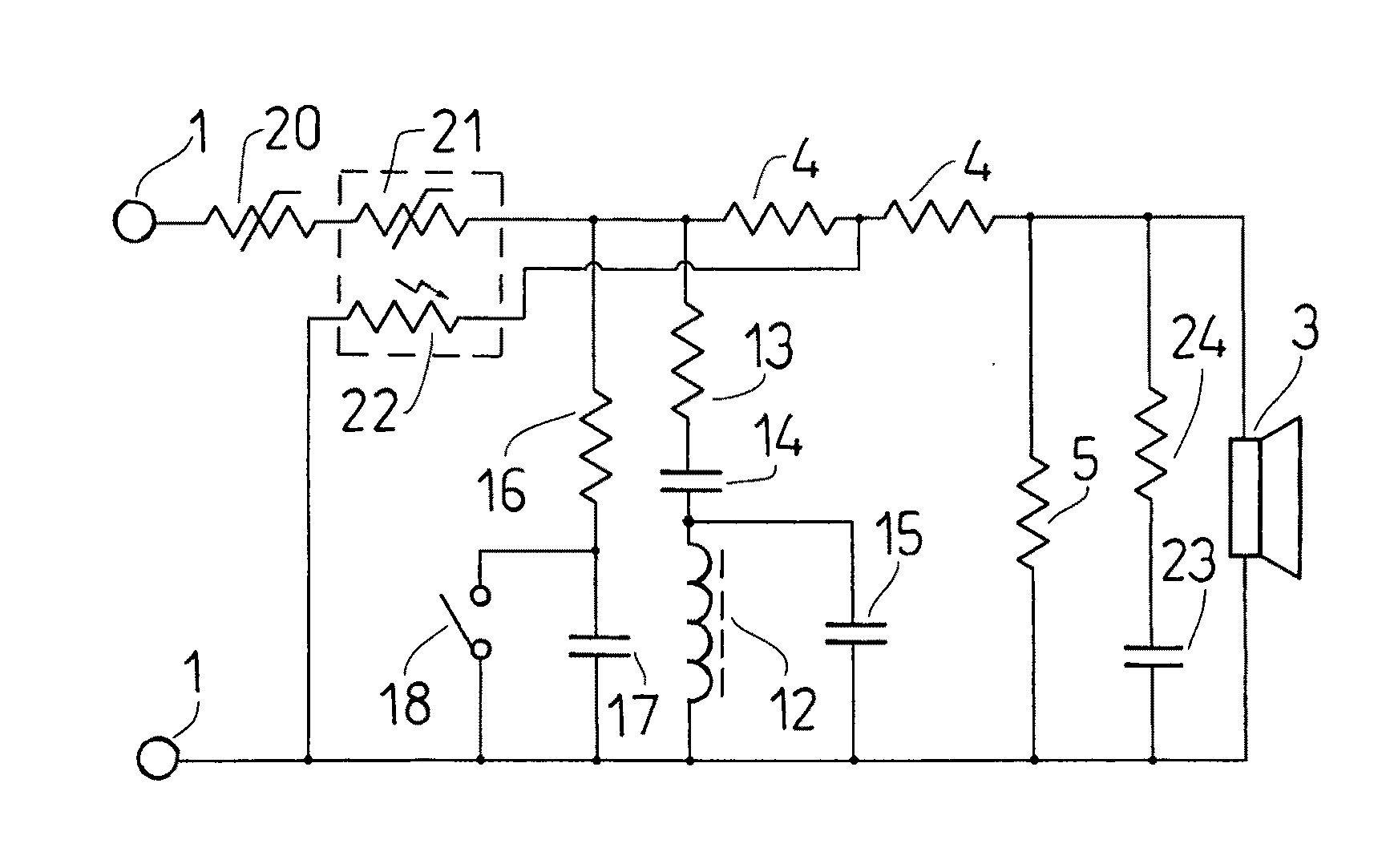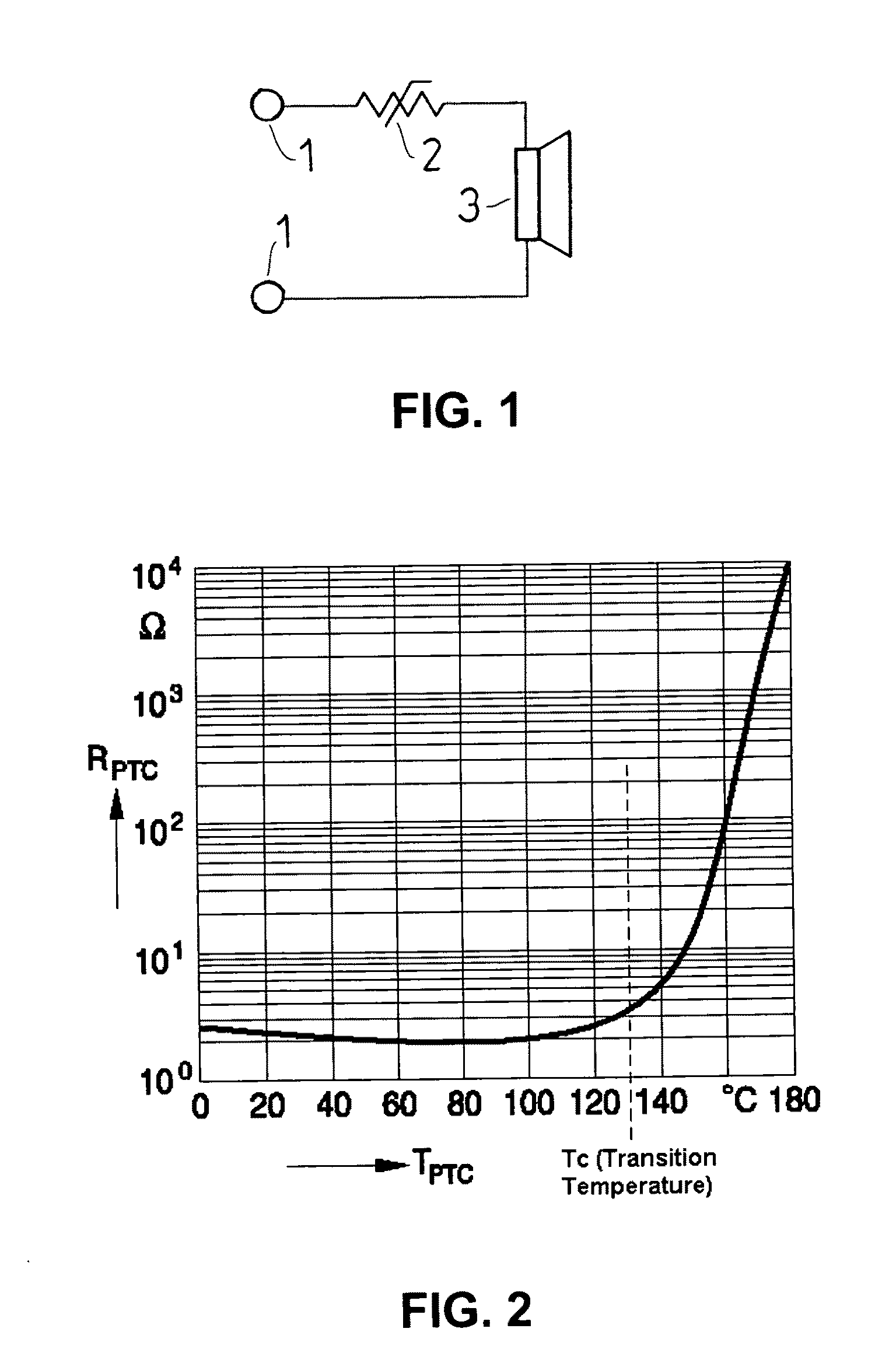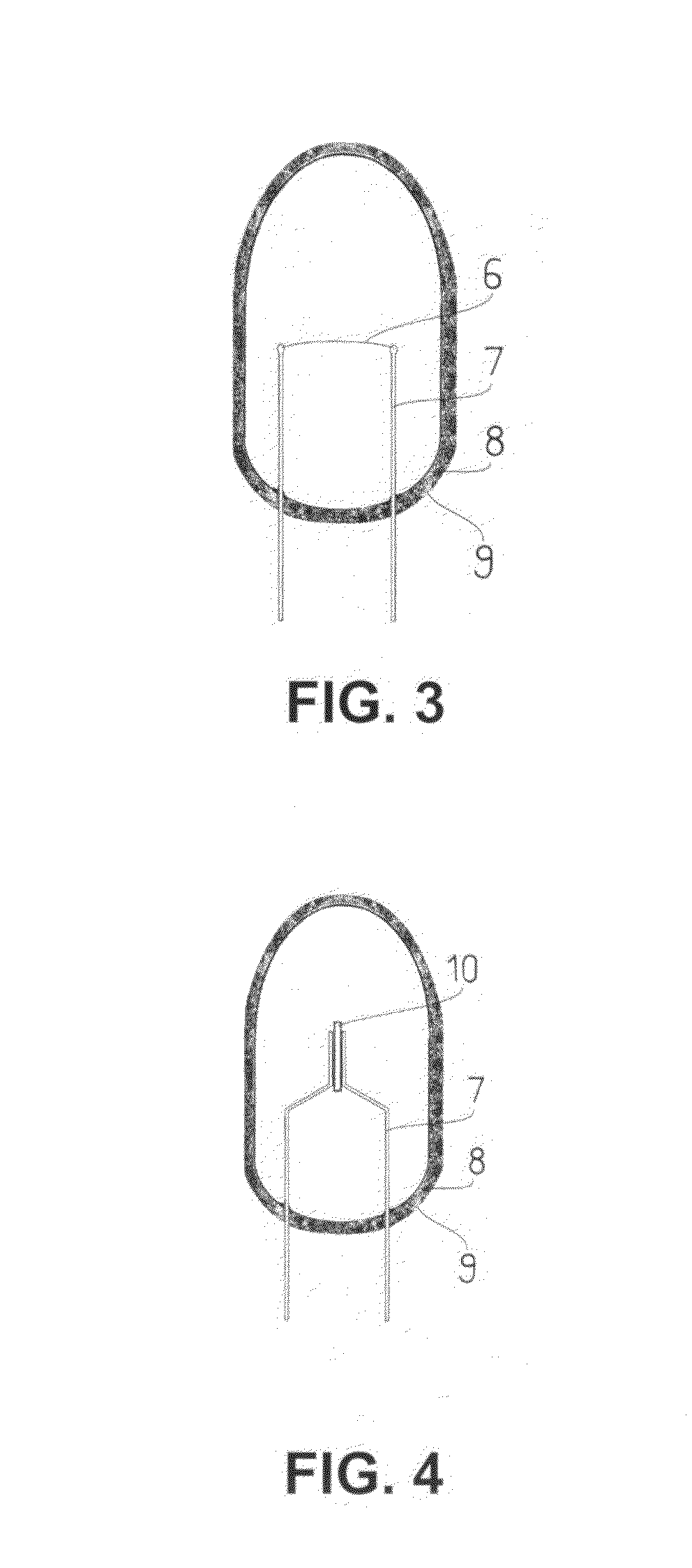Headphones with distortion-free loudness limiting and dynamic equalization device
a dynamic equalization and loudness limitation technology, applied in the field of headphone assembly, can solve the problems of less effective manual control, increased spl, and increased user spl, and achieve the effects of limiting the sound pressure level, reducing the rate of temperature drop, and small thermal mass
- Summary
- Abstract
- Description
- Claims
- Application Information
AI Technical Summary
Benefits of technology
Problems solved by technology
Method used
Image
Examples
Embodiment Construction
[0049]Referring to FIGS. 1 to 13, a headphone assembly according to a preferred embodiment of the present invention is illustrated.
[0050]For clarity, in this document, the figures illustrate one audio channel only. In stereo and other multiple channel audio systems there will be one instance of the circuit shown in the Figures for each audio channel.
[0051]Headphone refers an electrodynamic acoustic device for audio playback and is intend to placed near or inside the ear canals of a human. It can be one piece for one side of the ear only, but more commonly (as for music playback) a pair (stereo) for both ears. The term “headphones” in this document is used to describe circumaural (surrounding the ear) headphones, supra-aural (on the ear) headphones, earbuds (that seat in the concha), and canalphones (some people called it in-ear monitors).
[0052]FIG. 1 shows the minimal configuration of the basic invention according to a preferred embodiment of the present invention. Audio signals suc...
PUM
 Login to View More
Login to View More Abstract
Description
Claims
Application Information
 Login to View More
Login to View More - R&D
- Intellectual Property
- Life Sciences
- Materials
- Tech Scout
- Unparalleled Data Quality
- Higher Quality Content
- 60% Fewer Hallucinations
Browse by: Latest US Patents, China's latest patents, Technical Efficacy Thesaurus, Application Domain, Technology Topic, Popular Technical Reports.
© 2025 PatSnap. All rights reserved.Legal|Privacy policy|Modern Slavery Act Transparency Statement|Sitemap|About US| Contact US: help@patsnap.com



